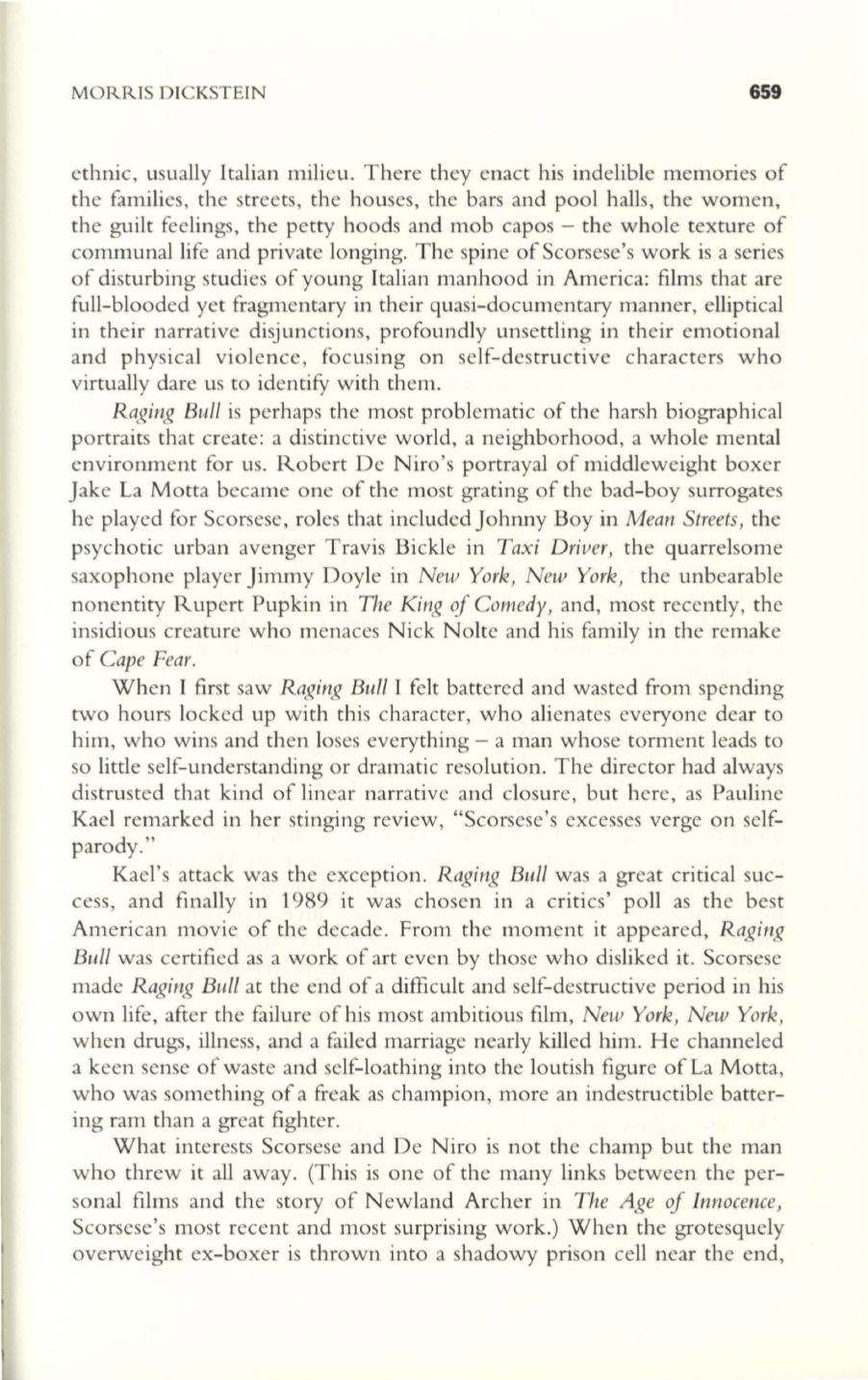
MORRIS DICKSTEIN
659
ethnic, usually Italian milieu . There they enact his indelible memories of
the families, the streets, the houses, the bars and pool halls, the women,
the guilt feelings, the petty hoods and mob capos - the whole texture of
communal life and private longing. The spine of Scorsese's work is a series
of disturbing studies of young Italian manhood in America: films that are
full-blooded yet fragmentary in their quasi-documentary manner, elliptical
in their narrative disjunctions, profoundly unsettling in their emotional
and physical violence, focusing on self-destructive characters who
virtually dare us to identify with them.
Raging Bull
is perhaps the most problematic of the harsh biographical
portraits that create: a distinctive world, a neighborhood, a whole mental
environment for us. Robert De Niro's portrayal of middleweight boxer
Jake La Motta became one of the most grating of the bad-boy surrogates
he played for Scorsese, roles that included Johnny Boy in
Mean Streets,
the
psychotic urban avenger Travis Bickle in
Taxi Driller,
the quarrelsome
saxophone player Jimmy Doyle in
New York , New York,
the unbearable
nonentity Rupert Pupkin in
The King of Comedy,
and, most recently, the
insidious creature who menaces Nick Nolte and his family in the remake
of
Cape Fear.
When I first saw
Raging
Bull
I felt battered and wasted from spending
two hours locked up with this character, who alienates everyone dear to
him, who wins and then loses everything - a man whose torment leads to
so little self-understanding or dramatic resolution. The director had always
distrusted that kind of linear narrative and closure, but here, as Pauline
Kael remarked in her stinging review, "Scorsese's excesses verge on self–
parody."
Kael's attack was the exception.
Raging
Bull
was a great critical suc–
cess, and finally in 1989 it was chosen in a critics' poll as the best
American movie of the decade. From the moment it appeared,
Raging
Bull
was certified as a work of art even by those who disliked it. Scorsese
made
Raging
Bull
at the end of a difficult and self-destructive period in his
own life, after the failure of his most ambitious film,
New York , New York,
when drugs, illness, and a failed marriage nearly killed him. He channeled
a keen sense of waste and self-loathing into the loutish figure of La Motta,
who was something of a freak as champion, more an indestructible batter–
ing ram than a great fighter.
What interests Scorsese and De Niro is not the champ but the man
who threw it all away. (This is one of the many links between the per–
sonal films and the story of Newland Archer in
The Age of Innocence,
Scorsese's most recent and most surprising work.) When the grotesquely
overweight ex-boxer is thrown into a shadowy prison cell near the end,


